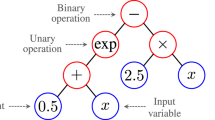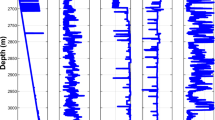Abstract
Employing computer vision (CV) and optimized pulse-coupled neural networks (PCNN), this work automatically quantifies the geometrical attributes of intracortical bone porosity (namely lacunae and canaliculi (L-C), Haversian canals, and resorption cavities). Fifty pathological slides of cortical bone (× 20 magnification) were prepared from middiaphysis of bovine forelegs collected fresh from butcher. Biopsies were subdivided into sectors encircling arcs (θ of 10°) and radial distances (R) originating from the bone’s geometric center toward posterior regions and spanning 3.3 mm. Microscopically, each pore is classified according to whether it belonged to primary or secondary osteon. Globally, each pore is assigned as being located in anterior or posterior regions. For each pore, area and major/minor axes lengths were determined as raw measures from which derived geometric measures, namely, area fraction (AF) and aspect ratio (AR), were derived. Said measures were plotted versus R (for different angles). Plots of AF and AR trends were found to vary linearly along the radial distance. Area fractions (%) significantly decreased linearly with R (p < 0.01) in the anterior region. In the posterior region, area fraction values are flat versus R. These findings are indicative of maturing osteons at the outer cortex with predominately near circular-shaped pores.

(Left) Grids of slides (magnified at 20X) of intra-cortical bone showing Lacunar-canalicular porosity (LCP). Areas marked with the dotted square represent a group of 25 images. The dashed line is a hand-drawn line that demarcates the anterior and posterior regions and the solid line is the best-fit arc radii (R =16.4 mm) of the dashed demarcation line. (Right) Images rotated in the polar coordinate system with their respective angles and radii shown.








Similar content being viewed by others
Abbreviations
- %so:
-
% area of secondary osteons in image
- %po :
-
% area of primary osteons in image
- A so :
-
Area of secondary osteons in image
- A po :
-
Area of primary osteons in image
- A rc :
-
Area of resorption cavity(ies) in image
- \( S\left({A}_{so}^l\right) \) :
-
Summed areas of lacunae in secondary osteons in image
- \( S\left({A}_{po}^l\right) \) :
-
Summed areas of lacunae in primary osteons in image
- \( S\left({A}_{so}^c\right) \) :
-
Summed areas of canaliculi clusters in secondary osteons in image
- \( S\left({A}_{po}^c\right) \) :
-
Summed areas of canaliculi clusters in primary osteons in image
- \( S\left({A}_{so}^{hc}\right) \) :
-
Summed areas of Haversian canals in secondary osteons in image
- \( {AF}_{so}^l \) :
-
Area fraction (%) of lacunae in secondary osteons in image
- \( {AF}_{po}^l \) :
-
Area fraction (%) of lacunae in primary osteons in image
- \( {AF}_{so}^c \) :
-
Area fraction (%) of canaliculi clusters in secondary osteons in image
- \( {AF}_{po}^c \) :
-
Area fraction (%) of canaliculi clusters in primary osteons in image
- \( {AF}_{so}^{hc} \) :
-
Area fraction (%) of Haversian canals in secondary osteons in image
- AF rc :
-
Area fraction (%) of resorption cavity(ies) in image
References
Remaggi F, Cane V, Palumbo C, Ferretti M (1998) Histomorphometric study on the osteocyte lacuno- canalicular network in animals of different species. I. Woven-fibered and parallel-fibered bones. Ital J Anat Embryol 103:145–155
Cardoso L, Fritton SP, Gailani G, Benalla M, Cowin SC (2013) Advances in the assessment of bone porosity, permeability, and interstitial fluid flow. J Biomech 46:253–265
Wang X, Ni Q (2013) Determination of cortical bone porosity and pore size distribution using a low field pulsed NMR approach. J Orthop Res 21:312–319
Lin Y, Xu S (2011) AFM analysis of the lacunar-canalicular network in demineralized compact bone. J Microsc 241:291–302
Thomas CDL, Feik SA, Clement JG (2005) Regional variation of intracortical porosity in the midshaft of the human femur: age and sex differences. J Anat 206:115–125
Thomas CDL, Feik SA, Clement JG (2006) Increase in pore area, and not pore density, is the main determinant in the development of porosity in human cortical bone. J Anat 209(2):219–230
Bousson V, Meunier A, Bergot C, Vicaut É, Rocha MA, Morais MH, Laval-Jeantet A, Laredo J (2001) Distribution of intracortical porosity in human midfemoral cortex by age and gender. J Bone Miner Res 16(7):1308–1317
Nirody JA, Cheng KP, Parrish RM, Burghardt AJ, Majumdar S, Link TM, Kazakia GJ (2015) Spatial distribution of intracortical porosity varies across age and sex. Bone 75:88–95
Tjong W, Nirody J, Burghardt AJ, Carballido-Gamio J, Kazakia GJ (2014) Structural analysis of cortical porosity applied to HR-pQCT data. Med Phys 41(1):013701
Burghardt AJ, Buie HR, Laib A, Majumdar S, Boyd SK (2010) Reproducibility of direct quantitative measures of cortical bone microarchitecture of the distal radius and tibia by HR-pQCT. Bone 4:519–528
Stein M, Feik S, Thomas C, Clement J, Wark J (1999) An automated analysis of intracortical porosity in human femoral bone across age. J Bone Miner Res 14(4):624–632
Hage IS, Hamade RF (2013) Segmentation of histology slides of cortical bone using pulse coupled neural networks optimized by particle-swarm optimization. Comput Med Imaging Graphics 7:466–474
Hage IS, Hamade RF Toward quantifying geometric microstructural differences between primary and secondary osteons via segmentation, 2014 Middle East Conference on Biomedical Engineering (MECBME), February 17–20, 2014, Hilton Hotel, Doha, Qatar, IEEE 371–374
Hage IS, Hamade RF. Distribution of porosity in cortical (bovine) bone, Proceedings of the ASME 2015 International Mechanical Engineering Congress & Exposition, IMECE2015, IMECE2015-51703, November 13–19, 2015, Houston, Texas
Hage IS, Hamade RF (2016) Geometric-attributes-based segmentation of cortical bone slides using optimized neural networks. J Bone Miner Metab 34:251–265
Hage IS, Hamade RF (2016) Detecting individual osteons in histology cortical bone slides using PSO-optimized PCNN. AIMS Med Sci 2:328–346
Revell P (1983) Histomorphometry of bone. J Clin Pathol 12:1323–1331
Lindblad T, Kinser J (2013) Image processing using pulse-coupled neural networks. Springer-Verlag, Berlin Heidelberg
Gao K, Dong M, Jia F, Gao M OTSU image segmentation algorithm with immune computation optimized PCNN parameters. IEEE, Congress on Engineering and Technology (S-CET), 27–30 May 2012
Mayya A, Banerjee A, Rajesh R (2013) Mammalian cortical bone in tension is non-Haversian. Sci Rep 3:Article number 2533
Clarke B (2008) Normal bone anatomy and physiology. Clin J Am Soc Nephrol Suppl 3:S131–S139
Zhou X, Novotny JE, Wang L (2009) Anatomic variations of the lacunar–canalicular system influence solute transport in bone. Bone 45(4):704–710
Lerner UH (2012) Osteoblasts, osteoclasts, and osteocytes: unveiling their intimate-associated responses to applied orthodontic forces. Semin Orthod 18:237–248
Raisz LG (1999) Physiology and pathophysiology of bone remodeling. Clin Chem 45(8 Pt 2):1353–1358
Acknowledgments
This publication was made possible by Award #103087 from the Lebanese NCSR. The authors also acknowledge the support of the university research board (URB) at the American University of Beirut.
Author information
Authors and Affiliations
Corresponding author
Rights and permissions
About this article
Cite this article
Hage, I.S., Hamade, R.F. A study of intracortical porosity’s area fractions and aspect ratios using computer vision and pulse-coupled neural networks. Med Biol Eng Comput 57, 577–588 (2019). https://doi.org/10.1007/s11517-018-1900-6
Received:
Accepted:
Published:
Issue Date:
DOI: https://doi.org/10.1007/s11517-018-1900-6




